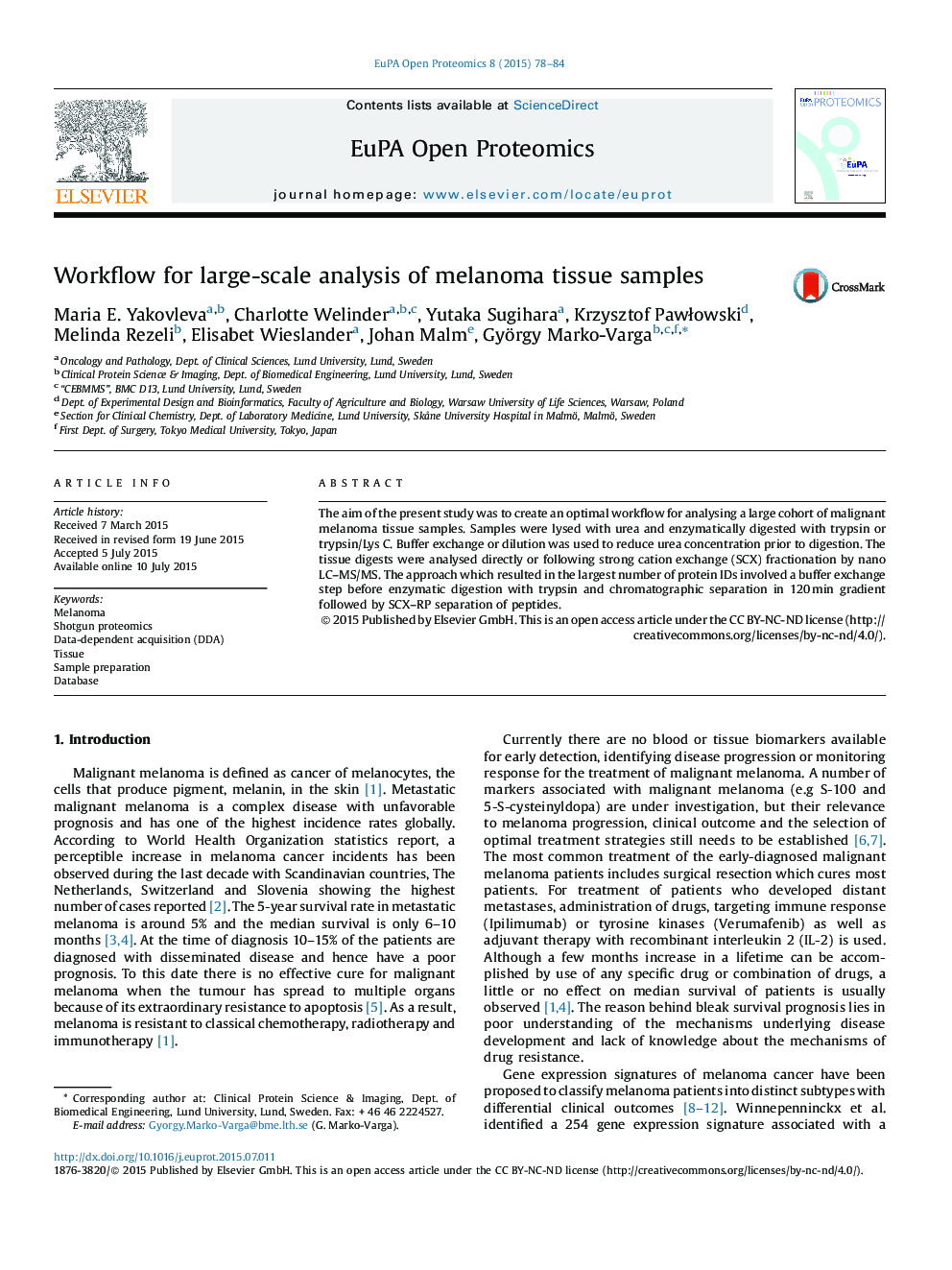| Article ID | Journal | Published Year | Pages | File Type |
|---|---|---|---|---|
| 1184443 | EuPA Open Proteomics | 2015 | 7 Pages |
•Workflow for large-scale analysis of melanoma tissue samples is optimised.•The power of SCX fractionation is demonstrated.•Two different strategies for sample cleanup before enzymatic digestion are compared.
The aim of the present study was to create an optimal workflow for analysing a large cohort of malignant melanoma tissue samples. Samples were lysed with urea and enzymatically digested with trypsin or trypsin/Lys C. Buffer exchange or dilution was used to reduce urea concentration prior to digestion. The tissue digests were analysed directly or following strong cation exchange (SCX) fractionation by nano LC–MS/MS. The approach which resulted in the largest number of protein IDs involved a buffer exchange step before enzymatic digestion with trypsin and chromatographic separation in 120 min gradient followed by SCX–RP separation of peptides.
Graphical abstractFigure optionsDownload full-size imageDownload as PowerPoint slide
